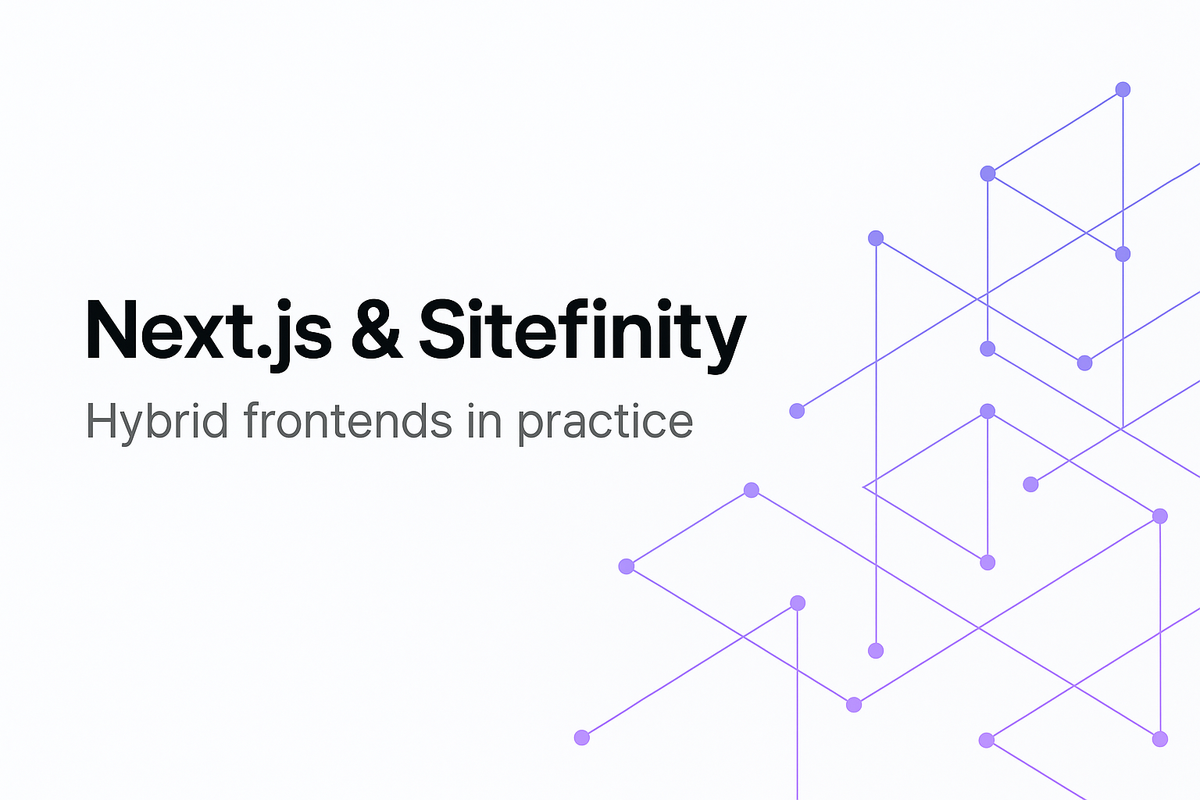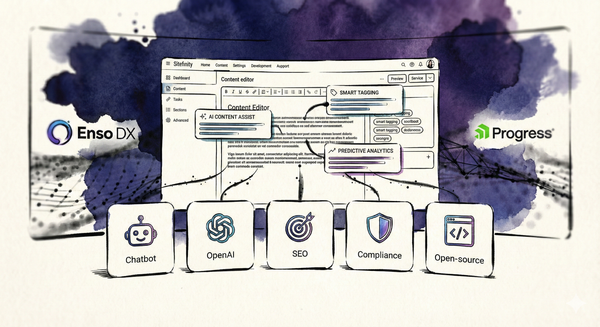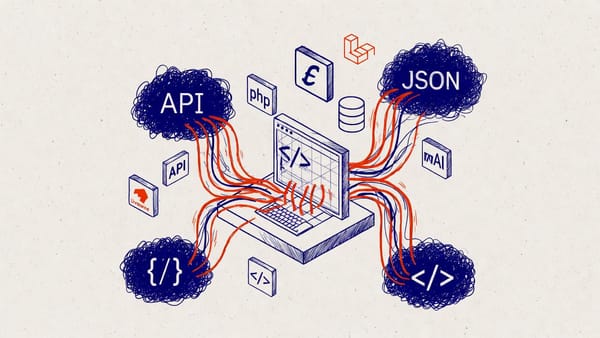Next.js & Sitefinity: Building Hybrid Frontends in Practice
Sitefinity 15.2 introduces native Next.js support, bridging React-based frontends with enterprise CMS workflows. Here’s what’s new, why it matters, and how you can get started.

If you’ve been watching the CMS world evolve, you’ll know that Sitefinity has quietly been transforming into a composable, API-first platform.
With version 15.2, Progress added native Next.js support — a move that changes how we think about Sitefinity frontends. Here’s a look at what’s new, how it works, and what it means for developers.
From CMS to Composable Platform
With the release of Sitefinity 15.2, Progress made a decisive move toward a composable, API-first direction.
The standout feature: native Next.js support.
Next.js has long been the go-to framework for developers building fast, server-rendered, SEO-friendly frontends using React. Until now, integrating it with Sitefinity meant building custom APIs or relying on REST hacks. The new native integration changes that.
What’s New
According to Progress’ official announcement, Sitefinity 15.2 introduces:
- Automatic REST and GraphQL endpoints for pages, content, and taxonomies.
- A Next.js starter kit preconfigured for Sitefinity’s data model.
- Preview mode that lets editors see content updates in real time.
- Single Sign-On integration with Progress ID and Azure AD.
- Support for edge deployments on Vercel, Azure Static Web Apps, or Cloudflare Pages.
This means you can now fetch and render Sitefinity content directly in React components—no extra middleware required.
Why It Matters
Historically, Sitefinity developers had to choose between a traditional ASP.NET MVC setup or a custom headless build.
With the new integration, you can finally combine both:
- Keep Sitefinity as your robust backend and workflow engine.
- Build fast, decoupled frontends using modern JavaScript tooling.
- Deploy globally with edge caching and CDN-first strategies.
This opens the door for hybrid setups: marketing pages rendered in React, while backend-heavy admin sections continue using MVC. It’s a practical evolution rather than a rewrite.
Example: Fetching Content via GraphQL
Here’s a minimal example of fetching Sitefinity content from a Next.js page:
Implementation Notes
- Use the official Next.js starter (
npx create-sitefinity-next-app) which includes preview integration. - Configure preview URLs in Sitefinity so editors can see their changes instantly.
- Secure your API endpoints with token-based access or IP restrictions.
- Deploy on an edge platform like Vercel, Azure or Cloudflare for performance and analytics.
The Bigger Picture
Progress is clearly positioning Sitefinity as a future-proof, composable DXP that integrates naturally with modern frontend ecosystems.
For developers coming from Laravel, Statamic, or even FilamentPHP, this approach feels familiar: structured data served through APIs, rendered by the frontend layer of your choice.
It’s not a full-blown Jamstack CMS yet, but it’s a strong step toward that flexibility.
And for teams maintaining enterprise-grade solutions, that balance between innovation and stability might be exactly what’s needed.
Further reading
• Progress – Native Next.js Support Announcement
• Sitefinity 15.2 Release Notes
• GraphQL API Overview





